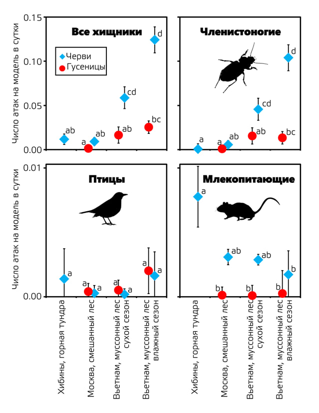Plasticine aided zoologists in discovering the predators of earthworms.
The importance of earthworms for ecosystems and soil fertility was highlighted by Charles Darwin. However, even many years later, scientists continue to uncover their new ecological roles and connections with other organisms.
A new article in the journal Applied Soil Science focuses on the unique significance of earthworms as a linking element between two food chains. One belongs to their native habitat — the soil — and is based on the decomposition of dead organic matter falling from above. The second is located on the surface and includes green plants — "providers" — that are consumed by herbivorous animals and predators of all kinds.
The study's authors — scientists from the A. N. Severtsov Institute of Ecology and Evolution — conducted experiments to assess how often earthworms that emerge to the surface become prey for predators. It is well-known that these invertebrates sometimes leave the soil (especially during rain) and can easily be eaten by others.
The biologists employed a seemingly unusual, yet already quite standard method of studying animal feeding behavior. Using regular modeling clay, they created replicas of earthworms (simple sausage-like shapes) that closely resemble the original in shape, size, and color. Their average length was four centimeters with a thickness of five millimeters. The researchers placed 2,208 clay "worms" on the surface of the soil in very different ecosystems located far from each other: in the humid forests of Vietnam, in the mixed forests of the Moscow region, and in the subarctic tundra (the Khibiny Mountains of the Kola Peninsula).
Next to the brown clay "worms," they positioned similar green "caterpillars" on the plants. This helped clarify how selectively predators target earthworms rather than any worm-like creature indiscriminately.

Some time later (on average after a week), the biologists returned to their clay models and managed to find almost all of them (94 percent of the original number). Among them, more than a quarter (about 27 percent) showed recognizable bite marks from arthropods, five percent were damaged by snails and slugs, and three percent by mammals. Signs of attacks by birds, stinging insects, reptiles, amphibians, and other creatures were also noted on the clay replicas.
Regardless of the location, the clay worm models attracted animals several times more often than the "caterpillars." In the northern ecosystem, mammals were more frequently observed on the clay, while in the Moscow region and the tropical forest, arthropods were predominant. Reflecting its greater species diversity, the Vietnamese fauna "attacked" the models significantly more often than others.
Thus, the biologists were able to demonstrate that the consumption of earthworms by terrestrial predators is by no means a rarity. They indeed serve as an important source of biomass from soil food chains to surface ones. This aligns with the substantial proportion of earthworms in the diets of some mammals: it reaches 10 percent in foxes and over 30 percent in badgers.